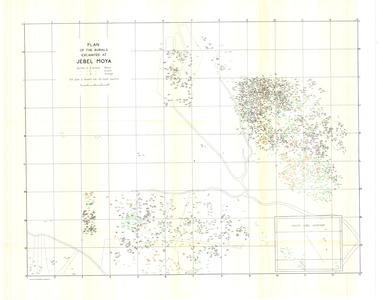Brass, MJ;
(2016)
Reinterpreting chronology and society at the mortuary complex of Jebel Moya (Sudan).
Doctoral thesis , UCL (University College London).

Preview |
Text (Thesis and Appendix 4)
Brass_Final submission.pdf Download (5MB) | Preview |
|
Spreadsheet
Brass_Appendix 1 Burial distribution map of Jebel Moya.csv Download (672kB) |
|
![[thumbnail of Brass_Appendix 2 New Register of Graves for Jebel Moya.jpg]](https://discovery.ucl.ac.uk/1478074/23.hassmallThumbnailVersion/Brass_Appendix%202%20New%20Register%20of%20Graves%20for%20Jebel%20Moya.jpg)  Preview |
Image
Brass_Appendix 2 New Register of Graves for Jebel Moya.jpg Download (2MB) | Preview |
|
Spreadsheet
Brass_Appendix 3 British Museum sherd trays.xlsx Download (285kB) |
|
|
Spreadsheet
Brass_Appendix 5 Foreign objects from Jebel Moya at the Griffiths Institute.csv Download (9kB) |
Abstract
The largest known pastoral cemetery in sub-Saharan Africa is found in the Jebel Moya massif, south-central Sudan. It was excavated from 1911 to 1914 by Henry Wellcome and first published in 1949. With more than 3100 human burials, the site provides extraordinary scope for exploring the interaction of indigenous and external cultural traditions on the southern boundary of the Meroitic state. This dissertation revises our understanding of Jebel Moya and its context. The few known archaeological localities of the southern Gezira and pre-Meroitic and Meroitic-era cemeteries are compared to elucidate the nature of pastoral social organisation at Jebel Moya. After reviewing previous applications of social complexity theory to mortuary data within and outside of Africa, new questions are posed for the applicability of such theory to pastoral cemeteries. Reliable radiometric dating of Jebel Moya for the first time by luminescence dates is tied into an attribute-based approach to discern three distinctive pottery assemblages. Three distinct phases of occupation are discerned, dating from (1) the early fifth millennium BC, (2) the mid-second to early first millennium BC, and (3) a mortuary phase from the first century BC into the sixth century AD. Analytically, new statistical and spatial analyses such as cross-pair correlation function and multidimensional scaling provide information on zones of interaction across the mortuary assemblages. Finally, an analysis of Meroitic and non-Meroitic mortuary locales from the central Sudan and Upper and Lower Nubia are examined to show how changing social, economic and power relations were conceptualised, and to highlight Jebel Moya’s potential to serve as a chronological and cultural reference point for future studies in south-central and southern Sudan.
| Type: | Thesis (Doctoral) |
|---|---|
| Title: | Reinterpreting chronology and society at the mortuary complex of Jebel Moya (Sudan) |
| Event: | Institute of Archaeology, University College London |
| Open access status: | An open access version is available from UCL Discovery |
| Language: | English |
| Keywords: | Meroe, Jebel Moya, Sudanese archaeology, Sudan, Pastoralists, Nomads, Pastoralist archaeology |
| UCL classification: | UCL UCL > Provost and Vice Provost Offices > UCL SLASH UCL > Provost and Vice Provost Offices > UCL SLASH > Faculty of S&HS UCL > Provost and Vice Provost Offices > UCL SLASH > Faculty of S&HS > Institute of Archaeology UCL > Provost and Vice Provost Offices > UCL SLASH > Faculty of S&HS > Institute of Archaeology > Institute of Archaeology Gordon Square |
| URI: | https://discovery.ucl.ac.uk/id/eprint/1478074 |
Archive Staff Only
 |
View Item |


